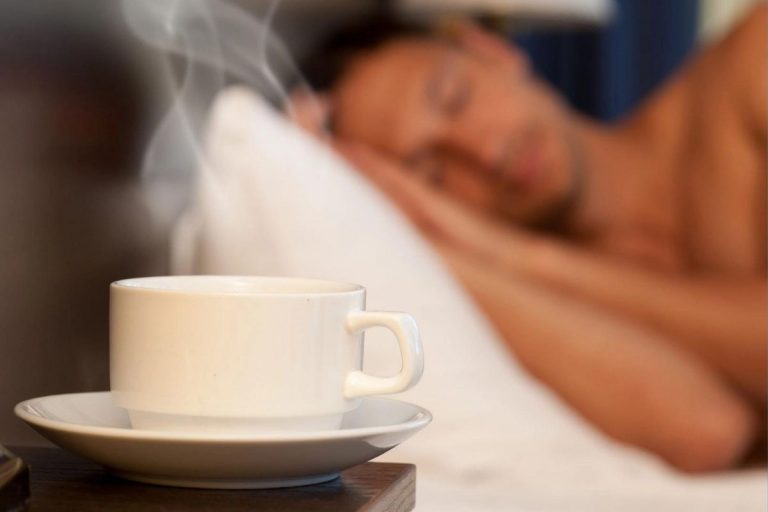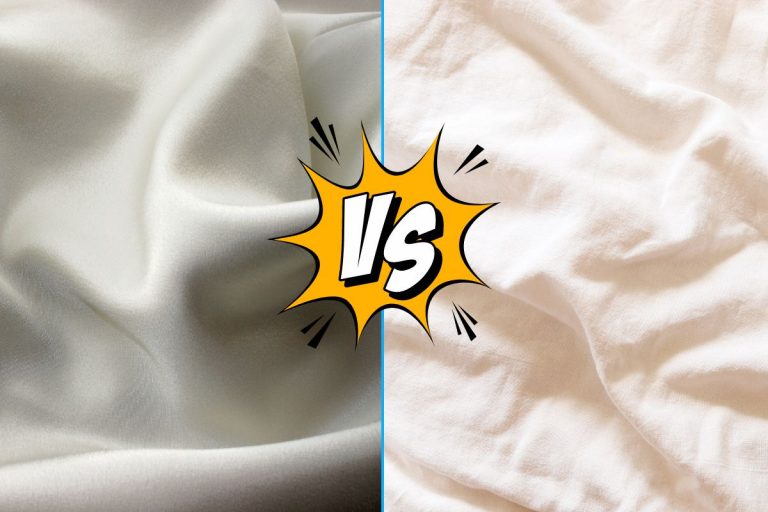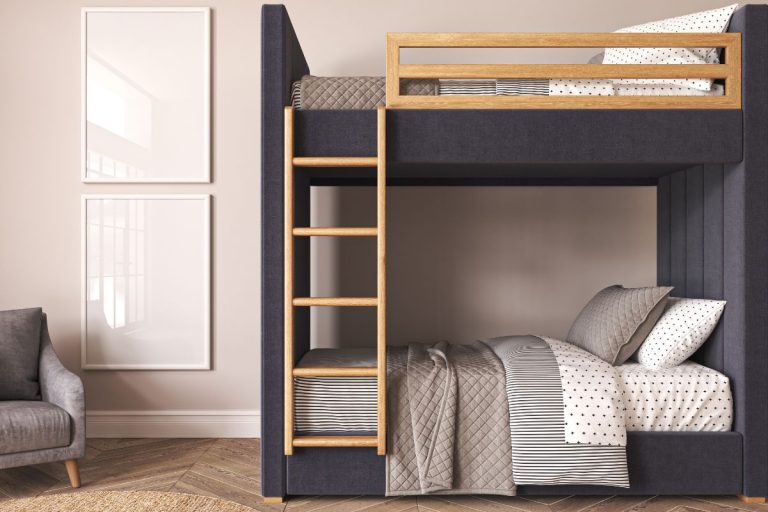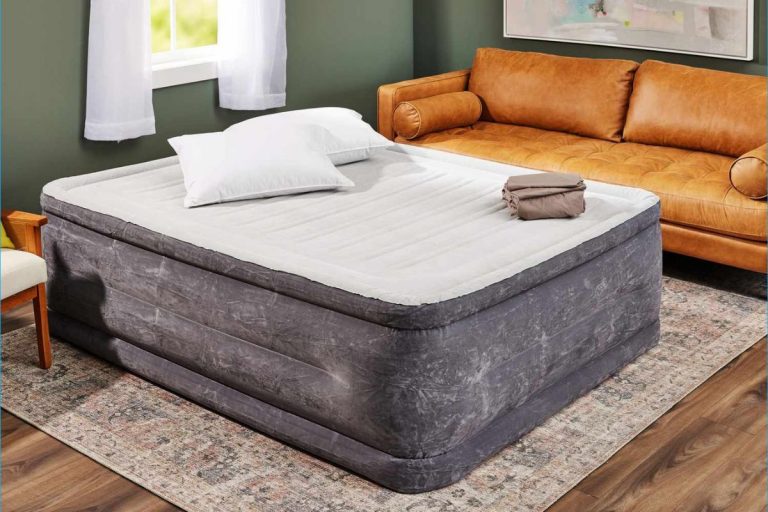If you’re painting only one room, you can always opt to spend time in other parts of your apartment or house until the paint dries and the fumes exit your apartment. Painting your apartment or house at once leaves you with a myriad of problems. Not only will the cleaning take significantly longer, but you will also be left asking yourself whether it is safe to sleep in a freshly painted room.
Is sleeping in a freshly painted room safe? Generally, it isn’t, at least during the first night when the paint is drying and the toxic materials located in most commercial paints are trying to leave your place. However, manufacturers are working hard to feature paints that emit fewer toxic substances leaving it easier for people to sleep in painted rooms.
Whether you’re hiring a team of people who will take care of the painting process or you want to put your DIY skills to practice and see how well you can paint your apartment or house with your partner or family, there are several precautions you want to take.
Continue reading this article if you are thinking about painting your place and learning more about the safety of different paints and when it’s safe to sleep in the painted room. There are several precautions you’ll need to take, and this article contains all of them.
The best thing you want to do is to let the paint dry, regardless of the type of paint you will use. Additionally, you will have to constantly air the room to ensure that all the paint fumes and different harmful materials will exit the rooms you plan to sleep in.
Many ways will affect how long will the paint dry. The first thing is the type of paint that is used to paint your room, but more about that later. It’s just important that there are different rates of drying paint after you painted the walls, windows, and ceiling.
Other factors that affect the drying rates are the temperature and humidity, similarly to other things that take time to dry like clothes. If the temperature is lower, it’ll take longer for the walls to dry. Additionally, if the humidity levels in your area are high it’ll also take time for the paint to dry.
That’s why it’s important to track the humidity levels in your house and apartment and refer to painting in times when the temperatures are higher, like the spring and summer. It’s worth noting that there are paints that are optimized for the high humidity settings. That’s great to know for people who live in naturally-occurring high humidity.
When it comes to temperature, 60 degrees Fahrenheit is the ideal beginner temperature for painting. If the temperature is lower than that, painting your house or apartment is not a good idea. If you need paint that dries fast, a lot of people stick with latex.
However, in settings with prominently high humidity more and more people opt for oil-based colors because they will dry faster in areas where moisture is present in the air. That way, kitchens, bathrooms, and other rooms with a potential source of water are usually painted with oil.
Is It Safe To Sleep in the Room After Painting?
The short answer is no. Everyone who chooses to sleep in the freshly painted room is exposing themselves to reactions to high-VOC active substances and other toxic materials that are located in the paint. It’s recommended to wait at least 72 hours before the high-VOC substances disperse and leave the area.
It is dangerous for adults to sleep in freshly painted rooms, but it’s even more harmful to your children and pets if you’ve just painted. It’d be best to send your children to their grandparents along with your pets if you just painted.
If you’re hiring a reliable painting company to do the dirty work instead of you, you should emphasize the types of paint you want to use and put them in charge of a thorough ventilation process to ensure that the bad air will escape the rooms in your house.
During this time, you and your family, as well as your pets, should find a place to retreat. The good news is that this can be considered an ideal time to go for a small trip with your family that you’ve been delaying for a long time.
Needless to say, elderly people also shouldn’t sleep in freshly painted rooms. Their immunity is weaker than that of a healthy adult and they’re more prone to nerve damage, problems in the respiratory tract, and organ failure. The same applies to pregnant women.
Sleeping in a freshly painted bedroom is not only unsafe for the pregnant woman but also for the child that she’s carrying, given that the VOC chemicals can also get into the breathing path of the baby.
Painting is an activity that shouldn’t be taken lightly, which is why you must always ensure there’s an alternative place to sleep in when painting, as to avoid the devastating consequences and side effects of sleeping in a room with present painting fumes and VOC chemicals, according to a study.
Although home paint manufacturers have taken steps to make paints safer for use and free of VOC chemicals, nearly all paints contain VOCs (volatile organic compounds.) It is known that they don’t only cause temporary side-effects such as an allergic reaction or headaches, but they are also responsible for organ failure and cancer.
Volatile organic compounds pose danger for you and your family when inhaled. Normally, small amounts of them won’t cause any damage, which is why they’re safe to use when painting.
However, if you opt to sleep in a room that has just been painted, the painting fumes being inhaled too much can lead to serious side effects, of which many are fatal. Even though headaches and small side effects such as drowsiness and tiredness are highly likely after inhaling VOCs, it’s the best not to risk it and stay away from such materials.
It’s worth noting that paint is not the only item used in painting that may contain VOCs. They are also present in degreasing agents, cleaning supplies, and even glues, all of which may or may not be used during painting.
Types of Paint
There are different types of paint that are used for the apartments today. The most common ones are oil-based and water-based paints. When buying paint for your house or apartment, it’d be good to consult with the manufacturer or salesperson, and of course, take a look at the label.
A label of the painting can will reveal a lot about the product you’re trying to buy. Always check whether the paint has been labeled as eco-friendly. That should be the first indicator that the amount of VOCs in the paint is either low or non-existent.
However, without such labels, there is a high possibility that the paint is high in VOCs and that you’ll have to avoid sleeping in your apartment anywhere from 3 days to 2 weeks after painting has been finished.
If you want to measure VOCs in paint, you should always look at the grammage of VOCs per liter in the paint. Keep in mind that water-based paints such as latex paints are safer compared to their oil counterpart. However, not even latex paints are 100% safe, it all comes down to the number of harmful chemicals they have in the composition.
Oil Paint
Oil-based paint usually consists of alkyds and has strong odors. It’s suitable for bathrooms and other humid areas so you usually won’t sleep in a room that was painted with oil paint.
It has a harmful amount of VOCs and will take significantly longer to dry compared to latex paints. It’s important to note that oil paints have 350 grams of VOCs per liter, which is significantly high.
Latex Paint
Latex is a water-based paint, and it dries considerably faster compared to oil paints. Depending on composition it can dry from 2 to 8 hours, which is much swifter compared to oil paints. It’s worth noting that they emit less VOC compared to oil variations but also come with less odor.
Nevertheless, even though there’s less emitting, it could take up to 2 weeks for the room to completely be clear of painting fumes and VOCs. It has 150 grams per liter of VOCs which is half as much as oil-based paints.
Latex paints are more popular and are more suitable for bedrooms. However, over the past decades newer variations of latex paint have emerged including the low-VOC and zero-VOC paints which are nearly odorless and have little to no VOCs.
- Low-VOC paint: One of the safest options with only up to 50 grams of VOCs per liter. They have very little odor and are quick to dry. The VOCs are quick to dissipate, especially if you air your rooms regularly and use fans to take the bad smell outside. Some experts consider them safe when it comes to sleeping on the day of painting, but many argue that it’s still risky.
- Zero-VOC paint: These paints are completely odorless and mostly have less than 5 grams per liter of VOC chemicals. That makes them incredibly safe options in the market, especially for those who are sensitive to smells. There is no release of toxic chemicals and it’s perfectly safe to sleep in a room that has recently been painted with this type of paint.
4 Risks of Sleeping in a Room After Painting
There are several risks of sleeping in a freshly painted room as mentioned above, especially if the paint contains paint fumes and VOCs which can disrupt sleep in a great matter. As mentioned earlier, sleeping after painting with low VOC and no VOC emission paints is safer, but you should always double check if you’re using a no-VOC paint.
1. Destructive to Your Nervous System
Unfortunately, the paint fumes that are especially prevalent in oil paints can get to your brain as you inhale them and they pass through your system. Anything that gets to your brain can disrupt its function and lead to damage to the central nervous system. That can result in various side effects that are mostly brain fog, dizziness, memory loss, and problems moving and keeping balance.
Editor’s notes: On some occasions, when too much paint fumes have been inhaled, they can lead to impairment of your movement coordination. If you notice any of the aforementioned symptoms go to the nearest ER to get checked.
2. Allergic Reaction
Unfortunately, it’s not only high-VOC substances that can lead to trouble in this case, even water-based paints such as latex can lead to adverse allergic reactions. Some people are allergic to latex and that can lead to serious allergic reactions
VOCs can also cause conjunctivitis and teary eyes, intense headaches, hives, rashes, and even eczema. The allergic reactions to paint can also sometimes lead to respiratory problems such as allergic rhinitis and heavy breathing, as well as runny nose and cough. A study shows that this risk is especially present in children.
Scientists noted that the presence of certain materials in wall paints can lead to allergic reactions.
3. It Can Cause Damage to Your Organs
If you are painting a room with a paint that has a high amount of VOCs present, it’s extremely unsafe to sleep in the same room where it’s been painted. It can lead to damage to some organs, especially your thyroid and liver. Additionally, it can lead to damage to your kidneys which can lead to plenty of health problems in your body.
Remember, both liver and kidneys are in charge of filtering bad substances and toxins from your body. You can intoxicate them with VOCs and paint fumes and give them too much to work with. In such situations, it can lead to organ failure.
Editor’s notes: Don’t forget that inhaling paint fumes first leads to your lungs, which can also cause pulmonary-related issues that can disrupt your breathing and cause adverse consequences for your health. This is especially dangerous if you have anemia and asthma, as it can result in an asthma attack.
4. Increased Risk of Cancer
Cancer was usually identified in animals such as dogs and cats upon exposure to VOC chemicals. However, scientists still believe that VOCs are responsible for different cancer variations in humans too. That’s why it’s not advised to be exposed to VOCs for extended periods of time as that can lead to the development of tumors and cancerous cells.
This especially applies to pregnant women where studies have shown that sleeping in a room with VOCs can lead to leukemia in both the pregnant woman and the newborn babies, or the development of leukemia during the childhood, which is extremely dangerous, according to a study.
Editor’s notes: Paint fumes can be present in the freshly painted room for a few days after the painting was complete. If you are pregnant try to sleep in some other room or get a new place to sleep for a few days until the toxic air particles dissipate and leave the painted rooms.
How to Sleep in a Room After Painting?
Unless you are sleeping in a room that was painted with no-VOC paints, it’s extremely dangerous to sleep in a freshly painted room. Still, some things that will help the paint dissipate faster are to keep the windows open and let the toxic air dissipate.
You can do that even faster if you’d use the fans and air conditioning unit to speed up the process of dissipation. Also, make sure to remove and clean all the painting materials that were used to paint your room in order to help the smell of paint disappear faster.
You shouldn’t sleep in a freshly painted room at least for a few days, but if you have to, try to sleep in a room that you haven’t painted yet, or in a room that you painted a few days before. Although it may slow the process, you should paint room by room so that you’d always have a place to sleep while waiting for the other room to dry and be safe to sleep in.
Also Read:





